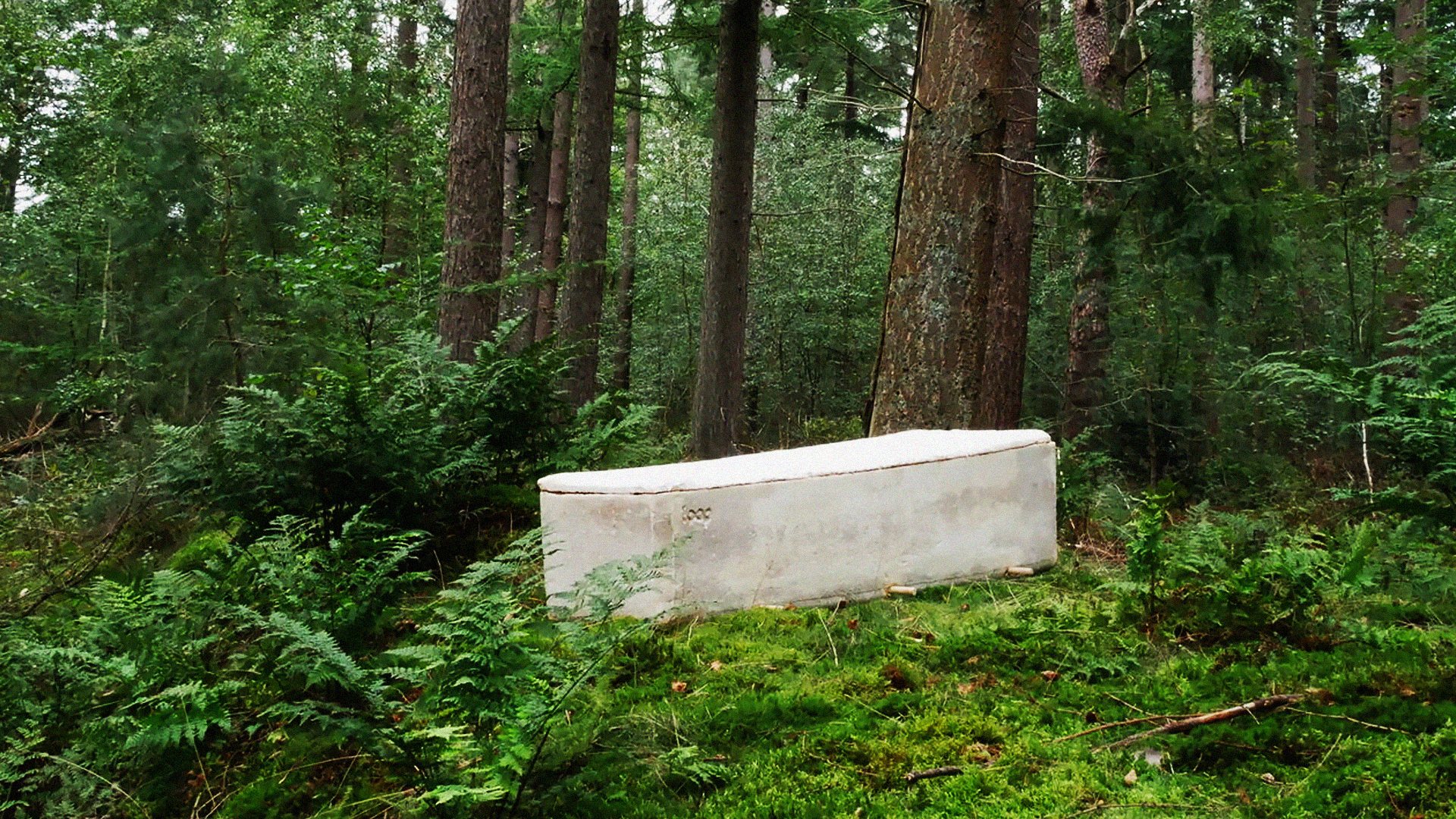Dutch company Loop recently developed a slick new sustainable coffin that’s made from mycelium, the same fibres that form the underground part of fungi, called ‘Living Cocoon’. It’s a compostable alternative to the usual wooden models and disappears in a few weeks, reducing the need for large amounts of land and maintenance. It has just been used for the first time at a funeral in the Netherlands.
Mycelium actually helps give back to the soil – a hugely important part of the fight against climate change – by neutralising toxins and providing fresh nutrients for plants. Its fibres can be used to make clothing and packaging too, and we’ve seen other small businesses such as Vollebak follow similar ventures this year by creating biodegradable fungi clothing that can completely compost within three months.
According to the founder of Loop, Bob Hendrikx, the Living Cocoon actively contributes to the full decomposition of the body and speeds up the process considerably, taking just several years rather than a decade. Traditional coffins slow normal body degradation as wood, metal, and synthetic clothing take longer to break down.
Each coffin takes a few weeks to form. A mycelium ‘mat’ in the shape of a coffin has to grow and then dry naturally. Once it’s exposed to damp soil it’ll begin to immediately decompose again.
Speaking to The Guardian, Hendrikx hopes that his company will help to transform the way we think about graveyards and burials, making them eco-friendly spaces that give back to the planet rather than damage it. A future where our graveyards are able to harbour new life through fresh nutrients is quite exciting, and could transform our conventionally gothic, sinister associations with graves and corpses.
So far, Loop has made 10 coffins in The Hague at a cost of £1,150, but the company plans to significantly lower these expenses as demand increases. It’s launched a ‘First 100’ pre-sales initiative on its website where customers can pre-order a coffin in order to secure funding and scale up production, and will provide a voucher that you can cash in at a much later date. Well, not you obviously, but you get my drift.
We could very soon be seeing more compostable coffins used around the world that dramatically lower the carbon footprint of burials. Even in death we can help the planet and slow down climate change, and provide a little extra food for the earth worms. Everybody wins.
Except for you, you’ll be dead. But at least you went out in eco-friendly style, right?



















